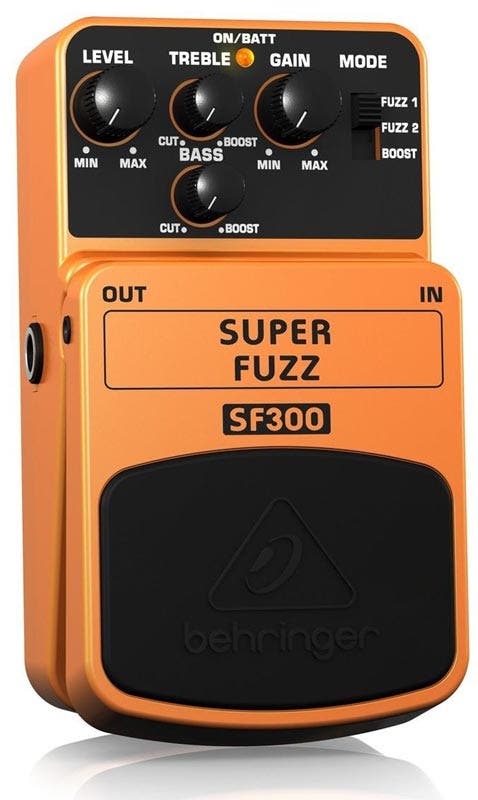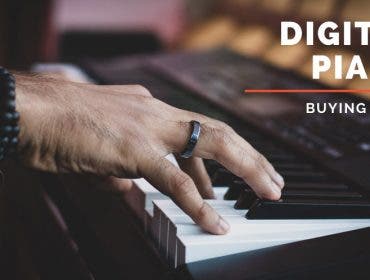When you plug your electric guitar directly into an amp for the first time and start playing, you may think to yourself, “Where is the crunchy rock-styled distortion? The shimmering reverb?” To get the most out of your electric guitar, you’ll need to invest in separate guitar pedals that shape your sound. Here are a few things to keep in mind when getting started on building your pedal collection.
What are the guitar pedals?
Guitarists have been altering their sounds since the invention of the electric guitar. They’ve poked holes in speakers, invented magnetic tape echo machines, and used spring-filled reverb tanks.
Starting in the mid-1960s, different transistor circuits became available that allowed guitarists to alter their sounds with “stompbox” guitar pedals. These small units sat on the floor between the guitar and the amp, providing on-demand effects by way of foot-operated buttons. By the late 1970s, digital microchips started finding their way into stompboxes, providing even more diverse sounds at a lower cost.
Most effects pedals have the same basic features as they did 50 years ago: on/off switches, input and output jacks for instrument cables, and battery terminals or AC/DC adapter jacks. They also usually feature knobs that control the volume of the signal, strength of the effect, and Hi/Mid/Lo tone controls.

Common effects pedals
Distortion: Also called “overdrive” or “fuzz” guitar pedals depending on the level of their distortion, this effect adds that crunchy edge that defines hard rock and metal genres. Although many amps feature distortion on their own, some guitarists own several different distortion pedals.
Reverb: This is a great way to thicken up an undistorted sound. It adds echoing reverberations like you’d hear in a large cavern or concert hall, instantly giving your sound a sort of “surf” vibe.
Delay: Often confused with reverb, delay pedals copy each note you play and then repeat it as it gradually fades away like a well-defined echo.
Chorus: This effect replicates your sound so it sounds like multiple guitars are playing the same note, some slightly out of tune, and often fading out with wavering vibratos.
Wah–wah: Listen to the opening of Jimi Hendrix’s “Voodoo Child” for a great example of this onomatopoeia of an effect. You simply rock your foot back and forth on the wah pedal, changing the tone from bass to treble.
Looper: These effects pedals don’t change your sound, but they’re still a great addition to your lineup. Looper pedals simply record a brief phrase of your playing and then play it back on endless repeat. Great for solo players.
In addition to all these single effects, there are digital multi-effects units available as well, like the Line 6 HX STOMP or Zoom’s G5n. There are also some other types to consider, including the phaser and flanger pedals.
Which guitar pedals should I buy first?
Pedal choice is a highly subjective topic, depending on what styles of music you play, and what types of guitars and amps you use. Almost all rock players start with distortion/overdrive pedals like an Ibanez Tube Screamer or a BOSS Angry Driver, a reverb pedal, and a delay like the Fender Mirror Image.

How much do effects pedals cost?
Effects pedals can range anywhere from $50 into the thousands for rare/vintage models. If you want to sample different effects without breaking the bank, brands like Behringer feature a full line of affordable effects pedals. And if you really like a particular effect, you can always upgrade to a pricier make or model.
Guitar pedal features to keep in mind
Although stacking up all the effects is tons of fun, there are a few things to remember. The more pedals you have, the more likely you are to have an instrument cable short out and ruin your whole chain, so pay extra careful attention to the amount you have connected. Also, once you’ve lined up more than around six pedals, you may notice some deterioration of sound quality. Most guitar players with multiple pedals arrange them on a specific pedalboard such as this one from Gator Cases, and power their pedals with a noise-reducing isolated power supply box.
Looking for a new pedal to add to your growing collection? Check out these must-haves:

Ibanez TS808 Original Vintage Tube Screamer Pedal ()
Known as the “Holy Grail of Tube screamers,” this Ibanez pedal deserves a spot in your rotation.

Behringer Super Fuzz SF300 3-Mode Distortion Effects Pedal ()
Enjoy killer fuzz effects without breaking the bank when you pick up this Behringer model.

TC Electronic VoiceTone H1 Harmony Creation Floor Pedal ()
An easy-to-use, affordable vocal harmony processor that provides the natural sounds you want.

Boss Harmonist ()
This stompbox delivers four effect modes (Harmony, Pitch Shifter, Detune, and S-BEND) in a single, intuitive pedal.

Fender Santa Ana Overdrive Pedal ()
Whether you want thin or thick overdrive sounds, this is a versatile, expert-crafted pedal from Fender.
Feature photo by Kelly Sikkema on Unsplash






